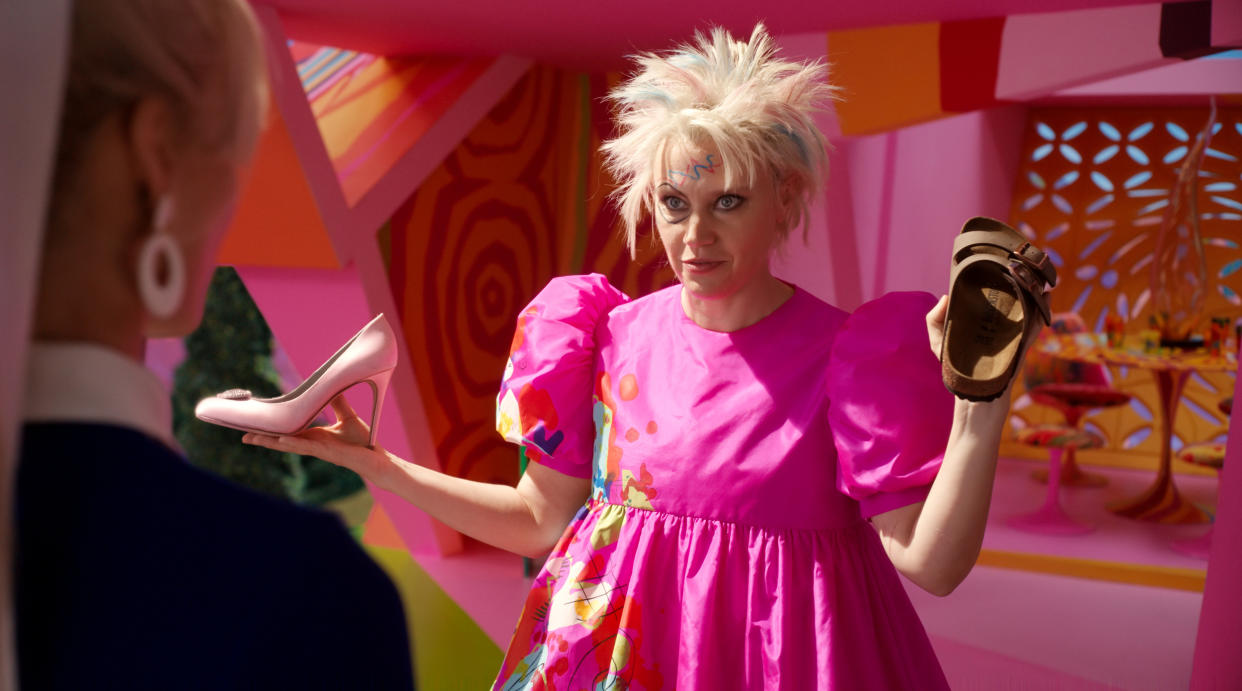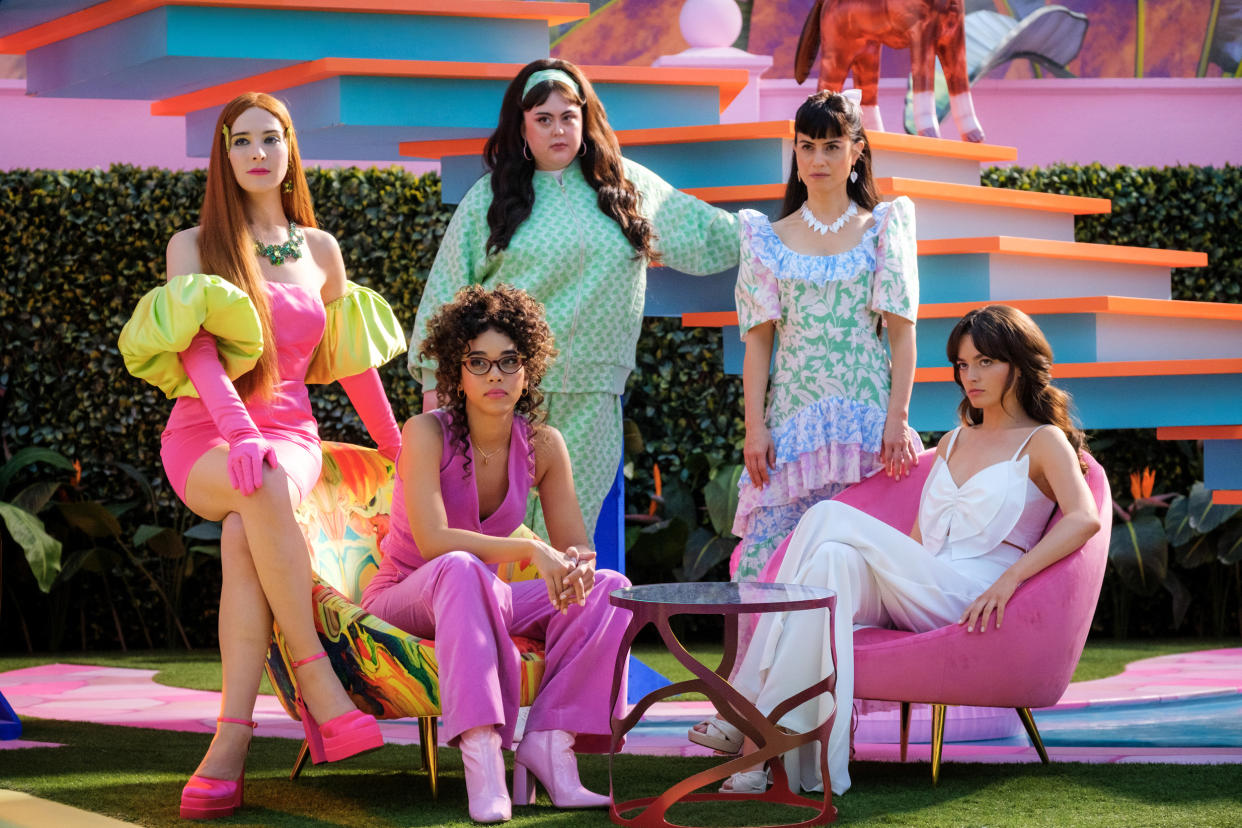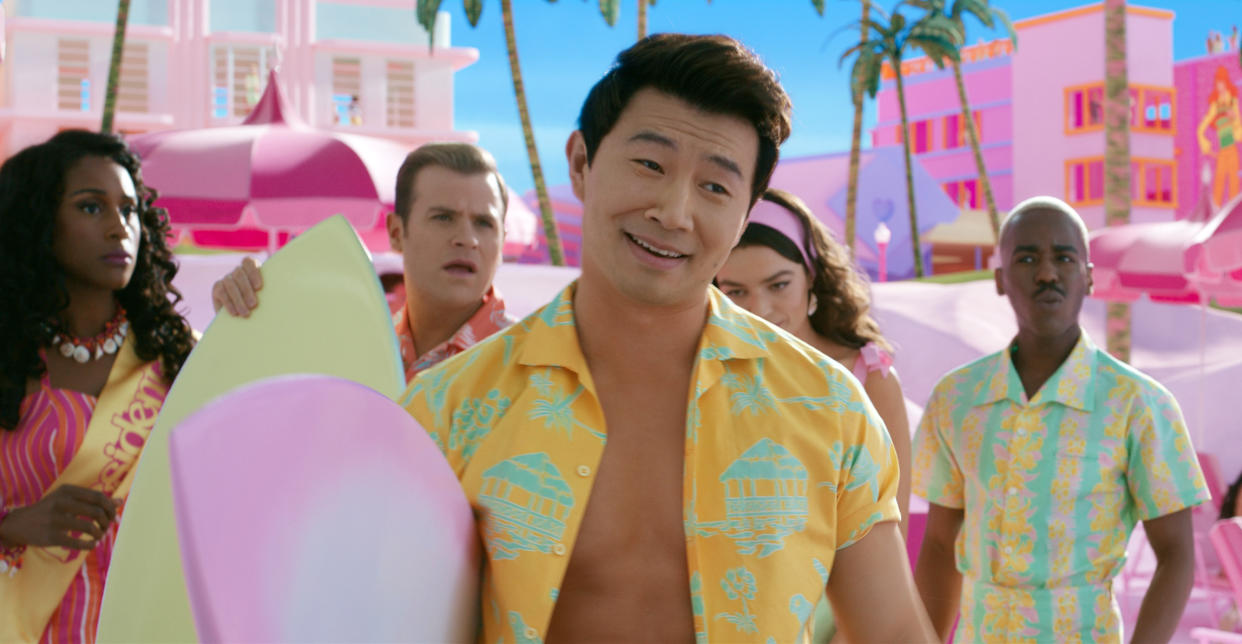Turns out, Barbieland isn't as gay as its queer fans had hoped
For months, a marketing campaign with stunning reach has been courting audiences with the promise of a pink-hued night of fantasy and seeing Margot Robbie play opposite Ryan Gosling as a real life-size Barbie. To the distaste of some, one of the targets of this campaign has been queer audiences, who’ve responded to the film’s campy ads and innuendo-heavy trailers with enthusiasm.
Andrew Nunez, 30, attended a Barbie Blowout Party screening of the film in New York City on Wednesday, prior to its national release. He told NBC News he had come to see the film for one reason.
“First of all, I’m gay,” he said, “and this movie is going to be gay canon.”
And Gay Times, a British LGBTQ news site, celebrated Friday, the day of the film’s official release, as “Barbie day“ and called the world-renowned doll a “queer cultural phenomenon.”
But despite rumors, a healthy number of LGBTQ actors, a few coded minor characters and perhaps some wishful thinking, Greta Gerwig’s “Barbie” movie has nothing overtly queer about it. In fact, in the end, the film pushes a surprisingly traditional view of society, in which straight and conventionally attractive men and women (or Barbies and Kens) rule the world.
“For a movie that spends so much time dissecting gender norms and highlighting the importance of diversity, I really wish ‘Barbie’ had openly acknowledged queer people,” Matthew Huff, an associate entertainment editor at Parade magazine, told NBC News after seeing the film at an early press screening.
In retrospect, it’s easy to wonder if critics and audiences should have ever expected anything more from the film, which is a co-production of Mattel, the manufacturer of the famous doll, and Warner Bros. After all, Mattel, which was highly involved in the script development and filmmaking process, has not historically embraced its enthusiastic queer fan base publicly. And, according to those who have done some thinking on the matter, the queer appeal of Barbie has always been more about the potential the shape-shifting doll represents.

In an interview with Fandango, actor Kate McKinnon, who is openly gay and plays “Weird Barbie” in the film, said Barbie is about “imagination.”
“It’s a way of expressing your innermost desires, and things that you’re exploring about yourself and about the world,” she said.
Alex Avila, a digital creator who specializes in social theory and pop culture, said the flaming heterosexuality of Barbieland — which is on full display in the trailers and promo clips — is part of the appeal for queer fans.
“Barbie is like a drag performance of heterosexuality; it’s so exaggerated that it exemplifies the ways that heterosexuality itself is constructed and performed,” Avila told NBC News ahead of “Barbie” hitting theaters. “I think queer people latch on to that heterosexual image because we can poke fun at it. We can reclaim it and use it in ways that show that heterosexuality is constructed and put into place by forces beyond us — and not universal.”
On the other hand, there are plenty of moments in the “Barbie” movie promos that seem much less heterosexual. Barbie driving alone in her pink convertible, proudly singing the Indigo Girls’ classic “Closer to Fine,” easily reads as a moment of sapphic joy out of context. And this is just after Weird Barbie, played by McKinnon, offers Barbie a Birkenstock in lieu of her girly high heel. Many also flagged the teased scene in which Barbie, now in the real world, exchanges a longing look with America Ferrera’s Gloria character; though, the relationship between the two turns out to be a tribute to motherhood and the traditional, nuclear family.
Just before the film’s release, Robbie all but squashed the rumors that some or any of the Barbies and Kens would be gay, telling the British LGBTQ magazine Attitude: The dolls don’t “actually have sexual orientations.”
And, in the end, audiences are left with a few fleeting and not particularly pride-inducing references to queer Barbie culture. There are brief appearances by Earring Magic Ken and Palm Beach Sugar Daddy Ken, both of which Mattel has always denied were intentionally gay-coded. And Michael Cera’s Allan, the one prominent coded character who is based on a ‘60s doll that was marketed as “Ken’s buddy,” spends most of the film groaning about his life in Barbieland.
What the film does feature is #MeToo-era feminism, girlboss rhetoric and a heavy helping of Mattel pride, which can be heard in the endless promotion of the Barbie slogan “You can be anything” — which might inadvertently be the queerest thing of all.
'You can be anything'
Queer Barbie fans have long had a special relationship with the idea that “you can be anything,” as it relates to the malleable doll. The slogan, which was adopted in 2015 as a retooled version of the 1985 campaign “We girls can do anything,” has come to define the brand over the years. And as a result, it’s not just the new film that has leaned heavily on this idea.
Other Barbie products, like the video games that came onto the scene in the mid-‘80s, have also presented the opportunity for kids to imagine different ways of being. In an interview with Out magazine, Hari Nef, a transgender actor who plays a version of Doctor Barbie in the new film, specifically mentioned the Barbie’s Magic Hair Styler computer game as being influential to her in this way.

“The idea that I could just change and transform the Barbie and create somebody from my fingertips, the magic of that, and I think also maybe the privacy of it, and something about Barbie and technology was really interesting to me at that point,” she said. “I felt like through Barbie I could explore all kinds of people to be and things to do.”
And the Barbie dolls themselves certainly rely on this concept, coming in career-oriented versions like an astronaut, marine biologist and presidential candidate, as well as lifestyle-geared iterations like Malibu Barbie. But while Mattel has turned a profit by pushing this narrative over the years, the company has perhaps never digested what it means to create a doll that could be anything to kids.
“There’s the play style that Barbie advertises on the box, but I would wager that most people don’t play exactly the way that the box tells you to,” Avila said. “If you’re a gender-nonconforming person or a queer person, you cut Barbie’s hair or you switch the clothes of Ken and Barbie, and it opens up this possibility for queerness that the Barbie brand hasn’t necessarily planned for.”
He added, “Barbie is literally in your hands to change and reconfigure.”
This phenomenon has even inspired scholarly writings, like Erica Rand’s 1995 book, “Barbie’s Queer Accessories.” The project began when Rand, who teaches gender and sexuality studies at Bates College in Maine, saw a spread in the lesbian porn magazine “On Our Backs” that involved Barbie in a compromising position. When word got around that Rand was thinking of incorporating the spread into her classroom instruction, she began receiving messages from people who wanted to share their own childhood memories of the doll.
“I started being contacted by a lot of people who wanted to tell me about weird things that they had done with Barbie when they were a kid,” Rand said. “People talked to me about looking back and feeling like they understood their queer origins by how they had treated Barbie.”
As far as the queer-coded trailers and promotional clips for the new “Barbie” film, Rand pointed to a phenomenon known as “gay window advertising,” or the practice of advertisers gesturing to queer audiences in a way that will go over the heads of those who would disapprove.

“I think of this with the trailer, not so much with Ken being played as campy and queer, or even the overall campy vibe, but in terms of the lesbian in-joke of Barbie singing to ‘Closer to Fine’ while she’s driving along in her Barbie convertible,” Rand said. “All this queer fantasizing can be generated in the space where few have seen the film.”
She added, “Whatever Mattel is doing in the interest of marketing, it’s not marketing lesbian Barbie or queer Ken, straight out.”
While some queer fans have lamented what they’ve described as bait-and-switch marketing, others are unphased by the film’s dearth of overt queerness. Brooklyn resident Eric Dimitratos, 37, has already seen the film twice, though, he admitted, “It wasn’t what I expected it to be.”
“It’s just fun,” he said. “It’s campy, but in, like, a good way.”
